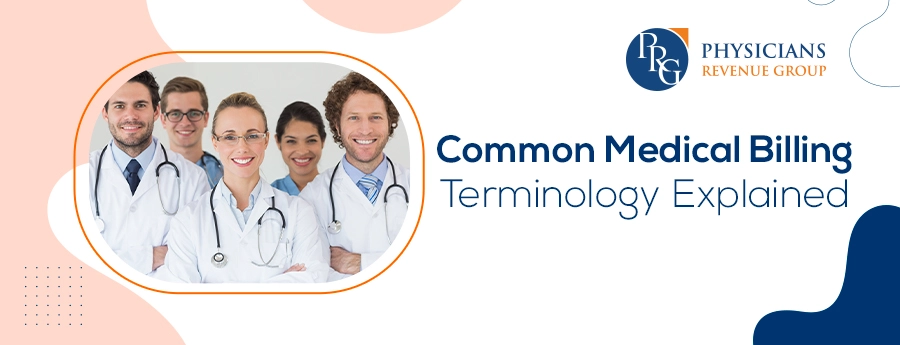
Email: info@prgmd.com | Call: +1 (630) 242-6474
Business hours: 9:00 to 5:00 | Monday to Friday
Email: info@prgmd.com | Call: +1 (630) 242-6474
Business hours: 9:00 to 5:00 | Monday to Friday

Table of Contents
ToggleMultiple medical billing terminologies are used in the medical bill and the associated insurance documents, which are confusing. The most commonly used medical billing terms that occur as part of patient bills are described below. You shall have a sound understanding of the medical billing terminology so that you know about the common billing facts and procedures on repeat. Medical billing services can never complete without using the billing terminologies during claim write-up. Even if you get a detailed medical bill, you can easily explain most of the billing terms to your medical staff and patients.
If you are a healthcare provider, then it is necessary for you to have an in-depth understanding of the common medical billing terminology. These terminologies are helpful to cater to every patient according to their active insurance plan. Moreover, having sound billing knowledge helps your medical team cover the mandatory steps for a successful medical billing process. The following are the most common billing terminologies that are seen as an integral part of every patient’s bills:
A third-party organization that acts as a billing provider. Its role in establishing the billing operation is different for both the provider and the payer. Clearinghouse is responsible for reviewing and making relevant claim edits before final submission to the payers as the result of a process known as “scrubbing.”
EOB is not a bill but a document given to the patient by the insurers explaining how a submitted claim underwent the reimbursement procedure compared to the healthcare insurance coverage. It has the complete list of medical services forwarded by the provider for payment. It covers the codes that identify the medical procedures acquired by the patient. The healthcare treatment costs either appear under active insurance coverage or out-of-pocket charges.
ICD stands for the international classification of disease codes. These are the codes that present the reason behind every billed procedure. In addition, the ICD-10 and CPT codes help insurers to understand the actual healthcare services delivered to the patients. This saves the time and effort of the insurance company with accurate determination of insurance payments parallel to the acquired medical treatments.
Insurers deny claims containing medical necessity that do not fall within the provider’s legal bounds. Insurers usually do not cover medical necessity due to a particular medical condition. So a medical provider always needs to demonstrate the necessity for such problematic healthcare treatments.
It is the process of encouraging insurance companies to pay for denied medical claims. A claim appeal is initiated only if it is denied or rejected.
Most insurers directly pay the medical provider for the healthcare services they have provided to their patient. The assignment of benefits always results in successful claim processing.
Medical billing services have a great role in determining the success of every claim reimbursement. At the same time, your practice shall stay knowledgeable about the medical billing terminology that your practice needs for better claim understanding. An insightful knowledge of the billing terms helps the medical practice distinguish every patient based on their insurance coverage.
Share:
Categories
Recently Added

What is a TPE Audit in Healthcare

What is an ABN in medical billing?

What does a Clearinghouse do During Claims Submission?
We Would Love to Assist You!
We treat your data confidentially and don’t share any information with a third party.